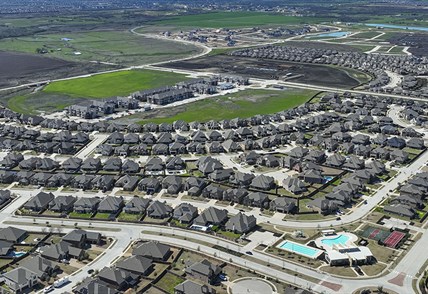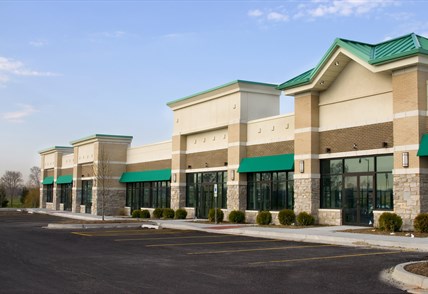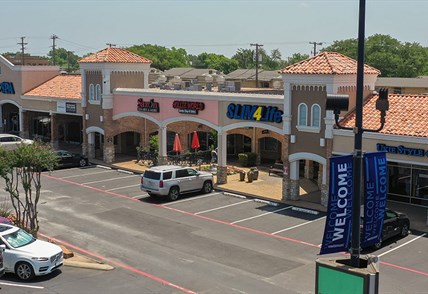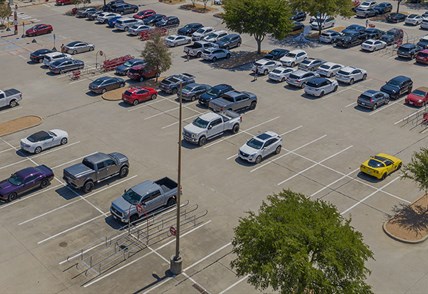What oil slump? Texas’ major retail markets—Dallas-Fort Worth, Houston, San Antonio, and Austin—are reporting their strongest performance in years.
In North Texas, occupancy is at 92 percent, the highest it’s been since “When Doves Cry” by Prince topped the Billboard charts. As we near year-end 2016, we expect the market to report another year of strong activity, thanks to existing-center leasing and a conservative development climate.
In Austin, the market’s 47.9-million-square-foot retail inventory is 96 percent occupied. That’s a high point, even for a market that has long reported healthy occupancy in the low-to-mid-90-percent range.
Even in Houston, despite a much-reported oil slump, the market reports a healthy occupancy rate of 95.5 percent. That’s a near-record, although occupancy is down half a percent compared to a year ago, due to slightly slower retail shop-space leasing and store closings that added close to 1 million square feet of vacant space to the market. One reason for the health of the market?
Although the upstream energy industry suffers from low prices, the downstream market concentrated in Southeast Houston is benefitting from the price reduction. The area has seen billions in new energy-plant construction, adding economic growth and jobs, which is spurring a significant number of new retail projects anchored by H-E-B, Kroger, and others.
In San Antonio, the 44.9-million-square-foot retail market is posting healthy occupancy of 94 percent, thanks to fully leased construction and the backfilling of major retail box spaces.
Three Major Market Drivers
1. Job Growth: During the 12 months ended September 2016, Texas gained 207,500 net new jobs, an annual growth rate of 1.7 percent. Many of those jobs were added in our four major metros. Austin gained 22,234 new jobs and reports an unemployment rate of 3.5 percent. DFW gained 136,048 new jobs and reports unemployment at 4.1 percent. Houston gained 35,592 new jobs and reports unemployment at 5.7percent. And San Antonio gained 26,091 new jobs and reports unemployment at 4.1 percent
2. Housing Growth: Our Texas markets are national leaders in single-and multi-family residential growth, per MetroStudy. Austin’s annual starts are at the highest level in three years, with around 13,400 new single-family units. DFW’s annual start pace ranks it No. 1 in the U.S., with nearly 30,000 new single-family homes. Houston ranks No. 2 in the country, with an annual start pace of nearly 26,000 new homes. San Antonio rounds out the list with just under 10,000 new units, for an increase of 5.6 percent year-over-year.
3. Population Growth: Four metros, more than 18 million residents. Austin, with a population of 2 million people, has grown 60 percent since 2000. DFW, with 7.1 million people, has grown 36.2 percent since 2000. Houston, with 6.6 million people, has grown 41.7 percent since 2000. And San Antonio, with 2.4 million people, has growth 38.8 percent since 2000.
Breaking Down Supply and Demand
The combination of job, residential, and population growth results in retail expansions throughout our four major metros. Many of these tenants are leasing increasingly scarce space in existing centers, since new space is largely for anchors, particularly grocer anchors, and speculative space is extremely limited.
Austin is seeing the most limited retail space, with only around 700,000 square feet on track for 2016, largely for grocery-anchored retail, as well as an open-air mall expansion with a Nordstrom. DFW’s new space is on track to add slightly more than 2 million square feet, a reduction from 2.8 million in 2015. Houston’s new space for 2016 is expected to total 2.9 million square feet, with the great majority for grocer-anchored retail; new space in 2015 topped 2.7 million square feet. San Antonio is expected to add right at 1.3 million square feet of new space during 2016, up from 900,000 square feet in 2015.
These low construction totals will help ensure the Texas retail markets remain tight. For growth markets with high retail occupancy, these construction totals remains conservative. And with new space dominated by anchor stores, new construction adds to occupancy—not vacancy.




